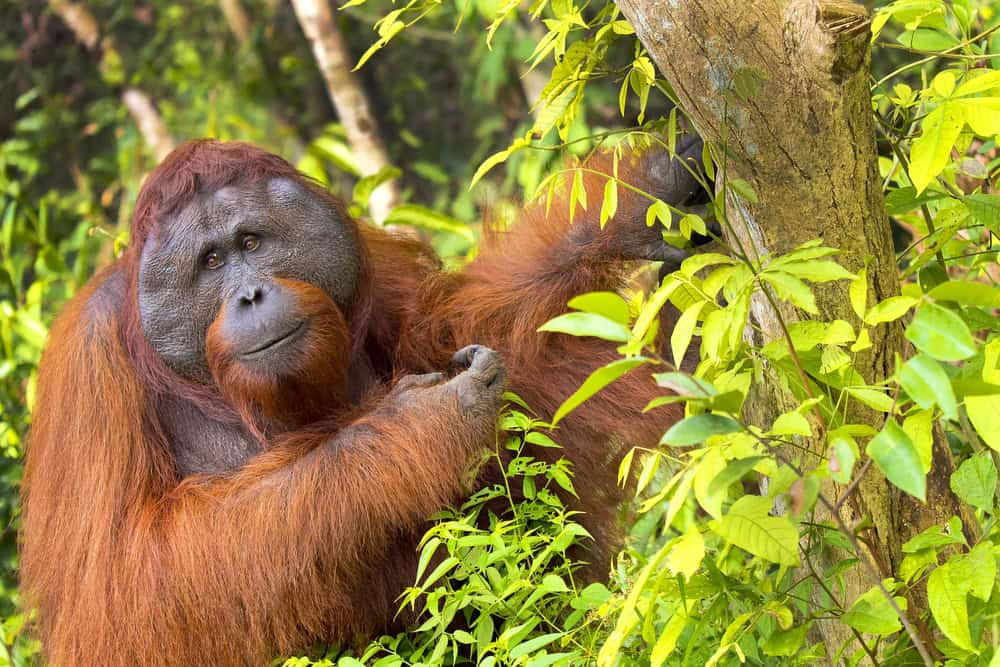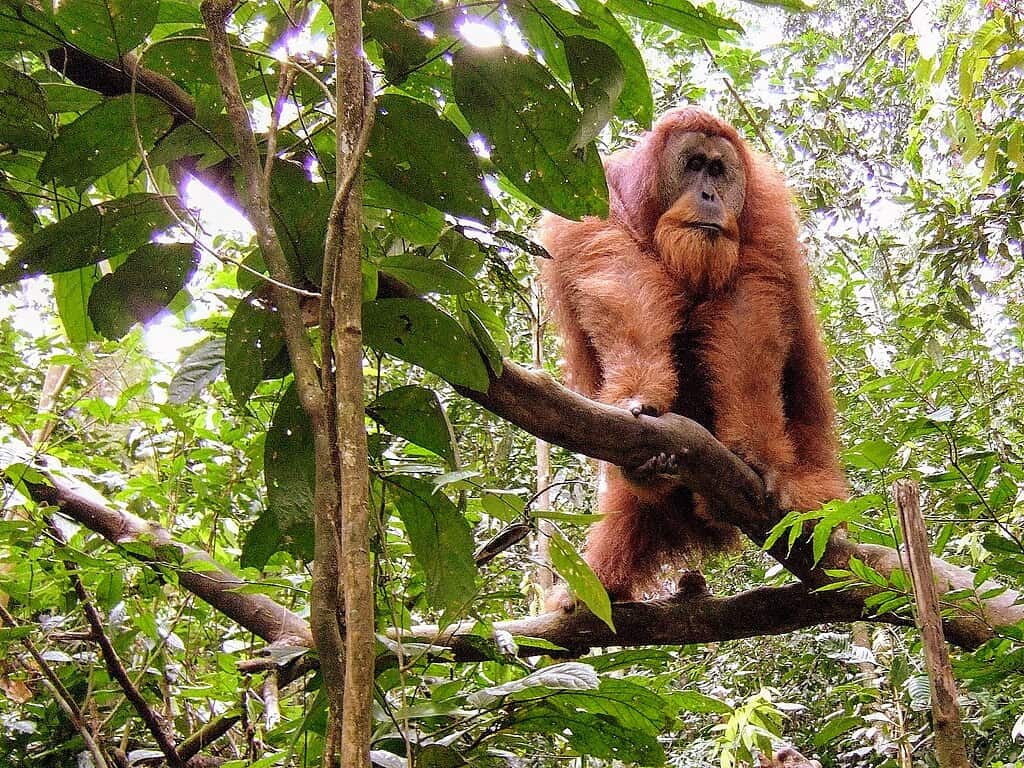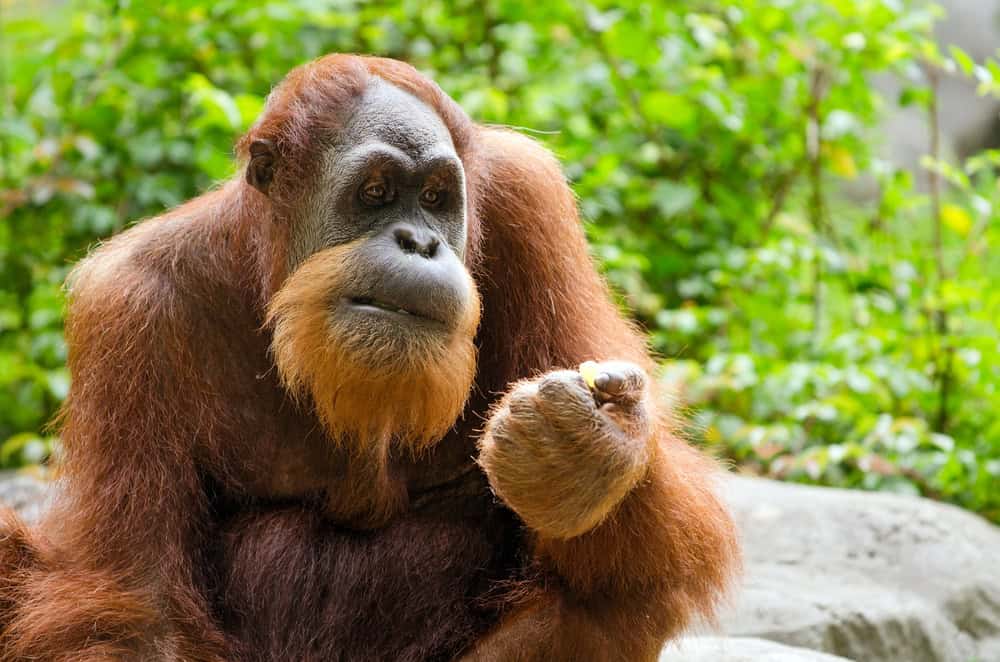Orangutans, with their soulful eyes and remarkable intelligence, represent one of our closest relatives in the animal kingdom. These magnificent great apes, whose name literally means “person of the forest” in Malay, captivate wildlife enthusiasts worldwide. Yet, experiencing these gentle red-haired creatures in their natural habitat remains one of nature’s most profound privileges—and one that’s increasingly rare.
Today, wild orangutans exist only on two islands in the world: Borneo and Sumatra. Their rainforest homes, once vast and impenetrable, face unprecedented threats from deforestation, palm oil plantations, and climate change. For those who dream of witnessing orangutans swinging through emerald canopies or fashioning umbrellas from large leaves during tropical downpours, these magical forests offer glimpses into a world both ancient and imperiled. Join us as we explore the most enchanting forests where you can ethically observe orangutans living as nature intended—free, wild, and magnificent.
Tanjung Puting National Park: Borneo’s Crown Jewel

Deep in Indonesian Borneo (Kalimantan), Tanjung Puting National Park stands as perhaps the most accessible and rewarding destination for orangutan enthusiasts. This 416,000-hectare protected area encompasses swamp forests, mangrove forests, and tropical heath forests, creating a biodiversity haven. The park gained international fame through the pioneering work of Dr. Biruté Galdikas, who established Camp Leakey research station in 1971.
Visitors typically experience this magical forest via traditional wooden houseboats called klotoks, cruising the coffee-colored Sekonyer River while proboscis monkeys leap through riverside vegetation. Several feeding stations throughout the park offer near-guaranteed sightings of semi-wild orangutans, many rehabilitated through conservation programs. The most magical moments often come unexpectedly—a mother orangutan crafting a night nest as sunset gilds the forest, or a massive flanged male appearing silently along a forest trail, his distinctive cheek pads announcing his dominant status. With over 6,000 orangutans residing within its boundaries, Tanjung Puting delivers an authentic wilderness experience while supporting crucial conservation efforts.
Danum Valley Conservation Area: Primeval Wilderness

For those seeking a more pristine forest experience, Malaysian Borneo’s Danum Valley Conservation Area offers 438 square kilometers of virtually untouched primary rainforest. Unlike many accessible orangutan habitats, Danum Valley has never been logged or inhabited, preserving an ecosystem that dates back millions of years. The orangutans here are completely wild, having never been rehabilitated or provisioned by humans. This means sightings require more patience and perhaps a bit of luck, but witnessing truly wild orangutans in this ancient setting delivers an unparalleled emotional impact.
The valley’s towering emergent trees, some reaching over 80 meters high, support a healthy orangutan population estimated at around 500 individuals. Early morning canopy walks provide opportunities to spot these great apes feeding on wild fruits or moving gracefully through the forest’s upper stories. Danum Valley’s pristine condition also means visitors might encounter clouded leopards, pygmy elephants, and Bornean gibbons—creating a complete immersion in one of Earth’s most biodiverse ecosystems. The area’s limited accommodations range from the luxurious Borneo Rainforest Lodge to basic research facilities, all requiring advance reservations due to strict visitor limitations designed to protect this ecological treasure.
Gunung Leuser National Park: Sumatra’s Orangutan Sanctuary

On the island of Sumatra, Gunung Leuser National Park represents the last major stronghold for the critically endangered Sumatran orangutan (Pongo abelii). This 7,927-square-kilometer UNESCO World Heritage Site forms part of the Tropical Rainforest Heritage of Sumatra and harbors approximately 14,000 orangutans—about 85% of the remaining wild Sumatran population. The gateway to this magical forest is typically through the small town of Bukit Lawang, where the Bohorok Orangutan Rehabilitation Centre operated until 2002.
Though the rehabilitation center no longer accepts new orangutans, many former residents and their descendants remain in the surrounding forest, creating reliable viewing opportunities. Unlike their Bornean cousins, Sumatran orangutans have longer, lighter-colored hair and slightly more slender faces. Trekking through Gunung Leuser’s dramatic terrain—characterized by rushing rivers, limestone cliffs, and mountainous ridges—visitors might witness orangutans using tools, a behavior more commonly observed in Sumatran populations. The park’s incredible biodiversity extends beyond orangutans to include Sumatran tigers, rhinoceros, elephants, and clouded leopards, though these species remain exceptionally elusive. Multiday treks offer the most rewarding experiences, with trained guides navigating this complex ecosystem while ensuring visitors maintain appropriate distances from the great apes.
Kinabatangan River Wildlife Sanctuary: Borneo’s Lifeline

The Kinabatangan River flows like a serpentine lifeline through eastern Sabah in Malaysian Borneo, creating one of the region’s most unusual orangutan viewing opportunities. Unlike the vast primary forests of other sanctuaries, the Kinabatangan Wildlife Sanctuary consists of fragmented forest patches along the river’s floodplain—islands of habitat surrounded by palm oil plantations. This concentration effect has created an extraordinary wildlife density, with orangutans and other endangered species confined to these remaining forest corridors.
Early morning or late afternoon boat cruises along the river and its tributaries often reveal orangutans constructing nests or feeding in riverside trees. The sanctuary’s unique ecosystem supports all ten of Borneo’s primate species, including the endemic proboscis monkey and the elusive maroon langur. What makes Kinabatangan particularly magical is the perspective it offers—viewing these arboreal creatures from water level creates distinct photographic opportunities and intimate encounters impossible in denser forests. The sanctuary also illustrates conservation challenges and successes in real-time, as local communities, NGOs, and government agencies work to reconnect forest fragments through corridor projects. Accommodations range from basic homestays to comfortable riverside lodges, with local guides providing deep knowledge of orangutan behavior and ecology.
Sebangau National Park: Peat Forest Stronghold

Central Kalimantan’s Sebangau National Park protects one of the largest contiguous tropical peat swamp forests remaining in Indonesia, spanning an impressive 5,684 square kilometers. This distinctive ecosystem, with its waterlogged, acidic soils and specialized flora, supports the largest known population of Bornean orangutans in a single contiguous forest—an estimated 6,900 individuals. Unlike the more tourist-oriented parks, Sebangau offers a genuinely off-the-beaten-path experience. The forest’s character differs dramatically from dryland rainforests; stunted, water-tolerant trees create a more open canopy where orangutans move with deliberate care through the smaller branches.
Researchers have documented unique behavioral adaptations in Sebangau’s orangutans, including specialized techniques for harvesting termites and distinctive vocalizations specific to this population. Visiting requires arrangements through conservation organizations like the Borneo Nature Foundation, which manages research and protection programs throughout the park. Exploration typically involves traversing boardwalks constructed over the soggy peat and occasionally traveling by canoe through narrow forest channels. While challenging to access, Sebangau rewards intrepid visitors with a glimpse into a specialized orangutan habitat that faces enormous threats from drainage, fire, and conversion to agricultural land.
Batang Ai National Park: Cultural Conservation Success

In Sarawak, Malaysian Borneo, Batang Ai National Park exemplifies how cultural respect and conservation can create a sanctuary for wild orangutans. This 24,040-hectare protected area borders Indonesia’s Lanjak-Entimau Wildlife Sanctuary, forming a transboundary conservation zone supporting approximately 1,000 wild orangutans. What makes Batang Ai particularly special is its connection to indigenous Iban communities, who have traditionally revered orangutans as sacred forest beings. This cultural belief system resulted in long-standing protection for orangutans, even before formal conservation efforts began.
Today, Iban guides lead visitors through forests their ancestors have protected for generations, sharing both scientific knowledge and cultural wisdom about “maias” (orangutans in the Iban language). The park’s relative remoteness—typically accessed by boat across the stunning Batang Ai reservoir—has limited mass tourism, preserving its pristine character. Semi-wild orangutans occasionally visit the park’s boundaries, particularly during fruiting seasons when fig trees produce abundant food. Visitors staying at the lakeside Aiman Batang Ai Resort can arrange forest excursions led by Iban guides, combining wildlife observation with cultural experiences in traditional longhouses. This harmonious relationship between indigenous culture and conservation makes Batang Ai a uniquely magical forest for encountering orangutans.
Bukit Baka Bukit Raya National Park: Rewilding Success Story

Spanning the provinces of Central and West Kalimantan in Indonesian Borneo, Bukit Baka Bukit Raya National Park represents one of the most ambitious orangutan rewilding efforts in the world. This mountainous forest park, encompassing 181,090 hectares, features dramatic elevation changes from lowland dipterocarp forests to montane ecosystems. Since 2012, the Borneo Orangutan Survival Foundation has released over 170 rehabilitated orangutans into carefully selected areas of the park, creating a new wild population.
Visitors with special arrangements can accompany monitoring teams tracking these released orangutans, observing their successful adaptation to wild living. The park’s varied elevations create distinct habitat zones, with orangutans typically preferring the fruit-rich lowland and hill forests below 900 meters. Beyond orangutans, the park harbors clouded leopards, sun bears, and over 250 bird species, many endemic to Borneo. Access requires significant planning, typically involving arrangements through conservation organizations and permission from park authorities. Accommodations consist primarily of basic research stations and camping facilities. What makes this forest particularly magical is witnessing the resilience of rehabilitated orangutans as they reclaim their evolutionary heritage, foraging independently and establishing territories in pristine forest—a powerful testament to conservation possibilities in the 21st century.
Kutai National Park: Ancient Forest Rebirth

In East Kalimantan, Indonesian Borneo, Kutai National Park tells a story of destruction and resilience that mirrors the broader narrative of orangutan conservation. This 198,629-hectare protected area once suffered catastrophic damage from logging, mining, human encroachment, and devastating forest fires during the 1982-1983 and 1997-1998 El Niño events. Despite these challenges, portions of Kutai have made a remarkable recovery, and an estimated 2,000 orangutans persist within its boundaries. Visiting this regenerating forest provides a unique perspective on orangutan adaptability and forest recovery processes.
Around the Prevab research station, semi-habituated orangutans frequently appear along established trails, offering relatively reliable sightings. The recovering forest contains a patchwork of different succession stages, from young secondary growth to pockets of primary forest that escaped the worst damages. This mosaic creates diverse feeding opportunities for orangutans, who adjust their diets and ranging patterns accordingly. Access to Kutai typically involves arrangements through the park office in Bontang or through specialized tour operators focused on wildlife conservation. Basic accommodations exist at research stations, though most visitors base themselves in nearby towns. The magic of Kutai lies in witnessing nature’s resilience—both the forest’s recovery and the orangutans’ persistence in the face of immense challenges.
Ethical Viewing Practices: Respecting the Red Apes

Regardless of which magical forest you choose to visit, responsible orangutan viewing practices remain essential for both ape welfare and conservation. Orangutans share approximately 97% of their DNA with humans, making them highly susceptible to human diseases—even mild illnesses like the common cold can prove fatal to these great apes. Reputable tour operators and parks enforce minimum viewing distances (typically 10-20 meters), prohibit feeding or touching animals, and limit group sizes to minimize stress on wild populations.
Visitors should always follow guide instructions, speak quietly, avoid wearing insect repellents containing DEET near orangutans, and never attempt to provoke behaviors for better photographs. During the COVID-19 pandemic, additional protocols were implemented, including mandatory face masks and increased distancing—practices that may continue in various locations. Some parks require health certificates or vaccination records before permitting close approaches to orangutan habitat. The most ethical viewing experiences occur with wild orangutans in their natural habitat rather than at rehabilitation centers, though some rehabilitation facilities maintain high standards and support crucial conservation work. By respecting these guidelines, visitors contribute to sustainable ecotourism that incentivizes forest protection rather than exploitation.
Conservation Challenges: Forests Under Threat

The magical forests where orangutans still roam face unprecedented threats that make visiting them both a privilege and an ethical consideration. Indonesia and Malaysia, which host all remaining wild orangutans, have some of the highest deforestation rates globally. Between 1973 and 2018, Borneo lost over 50% of its forests, primarily to industrial oil palm plantations, timber extraction, mining, and agricultural conversion. Sumatra has fared even worse, with over 60% of its lowland forests—prime orangutan habitat—destroyed since 1985. Climate change introduces additional stressors, including altered fruiting cycles and increased fire risks in drought-prone regions.
These combined pressures have resulted in population declines exceeding 80% for Sumatran orangutans and 50% for Bornean orangutans over the past three generations. All three orangutan species (Bornean, Sumatran, and the recently identified Tapanuli orangutan) are now classified as Critically Endangered by the IUCN. Responsible tourism to orangutan habitats generates economic incentives for protection, with visitor fees funding ranger patrols, habitat restoration, and community development programs. By experiencing these magical forests firsthand, visitors become ambassadors for orangutan conservation, advocating for sustainable palm oil, reduced consumption of forest products, and stronger protection for remaining orangutan habitats.
Planning Your Visit: Practical Considerations

Visiting orangutan habitats requires careful planning to maximize both ethical wildlife encounters and personal comfort. The best viewing opportunities generally occur during dry seasons: March to September in Borneo and February to October in Sumatra, though climate change has made these patterns less predictable. These periods coincide with peak fruiting seasons in many forests, when orangutans congregate around food sources. Advance bookings are essential for accommodations within or near national parks, particularly at limited-capacity research stations or premium ecolodges.
Many parks require permits and licensed guides, arranged weeks or months in advance through park authorities or reputable tour operators. Physical preparation matters—most orangutan habitats require moderate fitness for hiking in hot, humid conditions on sometimes challenging terrain. Essential packing items include lightweight, neutral-colored clothing (avoid bright colors that startle wildlife), leech socks, rain protection, high-quality binoculars, and a camera with zoom capabilities to maintain proper viewing distances. Medical preparations should include malaria prophylaxis, vaccinations recommended for rural Southeast Asia, and basic first aid supplies. Partnering with operators who prioritize ethical wildlife viewing, employ local guides, and contribute meaningfully to conservation adds significant value to the experience while ensuring your visit benefits both orangutans and their human neighbors.
Conclusion: The Future of Magical Forests

The magical forests where orangutans still swing freely through ancient canopies represent some of Earth’s most precious and threatened ecosystems. Each visit to these remarkable habitats carries dual significance—offering life-changing encounters with our intelligent red-haired relatives while highlighting the urgent conservation challenges they face. The very existence of these forests hangs in precarious balance, dependent on decisions made by governments, corporations, and consumers worldwide.
Yet there are reasons for cautious optimism, with innovative conservation programs showing success, indigenous communities gaining recognition for their forest guardianship, and sustainable tourism creating economic alternatives to destructive land uses. For those fortunate enough to witness wild orangutans in their forest homes, the experience often inspires a lifelong commitment to protecting these irreplaceable beings and their habitats. As we marvel at orangutans’ remarkable adaptations, complex social behaviors, and unmistakable self-awareness, we confront fundamental questions about our relationship with nature and our responsibilities to other sentient beings with whom we share this planet.
- How Baby Giraffes Learn to Walk Within Hours - August 16, 2025
- Why We Need to Save The Cross Gorilla, The Most Endangered Primate in The World - August 16, 2025
- This Snake Can Climb Glass Walls - August 16, 2025

